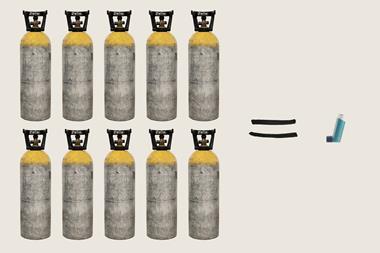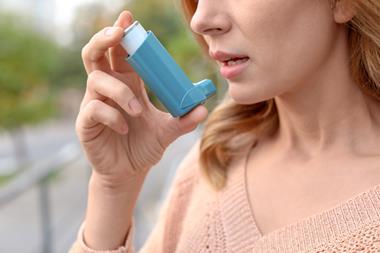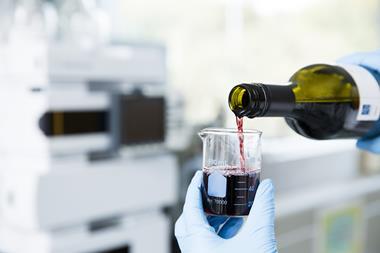Alternatives with lower global warming potential are out there, but the onus can’t be on those suffering
Andy Extance’s feature on p44 outlines a fact that many people may find surprising: inhalers – commonly used to combat conditions such as asthma –have greenhouse warming potentials (GWP) that seem excessive for their small size.
Andy Extance’s feature outlines a fact that many people may find surprising: inhalers – commonly used to combat conditions such as asthma –have greenhouse warming potentials (GWP) that seem excessive for their small size.
The feature goes on to explore the various options that pharma companies, healthcare systems, doctors and patients can use to reduce the impact of pressurised metered dose inhalers. But it’s important to set out straight away that nobody who uses an inhaler should feel any guilt or concern over that use, and should certainly not change their behaviour as a result.

Using the right inhaler in the right way, as prescribed by your doctor, is the right choice. For some patients, there are already other options which do not contain greenhouse gases: dry powder inhalers or soft mist inhalers. The choice can be discussed with a doctor, as they are not suitable for everyone.
But it’s interesting to note that prescribing practises make a huge difference: in Sweden, only 13% of patients are prescribed the higher GWP, compared to 70% in the UK. This is clearly an area where more joined-up thinking at a national level can help, and a slight increase in cost could have a huge environmental benefit.
With pharma companies running trials on inhalers with lower-GWP propellants, it feels like this is a problem that can be fixed without too much inconvenience to most people. If that’s the case, it’s concerning that the problem has been over 30 years in the making, as the feature explains, with its root in the 1987 Montreal protocol that banned certain chlorofluorocarbons as they were harming the ozone layer.
That legislation is widely seen as a great success story; the ozone layer has stopped receding and is showing signs of recovery. Former UN secretary general Kofi Annan described it as ‘perhaps the single most successful international agreement’.
It’s sometimes hard to feel a similar level of hope or faith in the international community’s attempts to combat climate change, with the ongoing Cop30 not generating much optimism. But with China’s emissions recently peaking, perhaps the work to reduce the warming footprint of asthma inhalers is just one tiny step among others.

















No comments yet